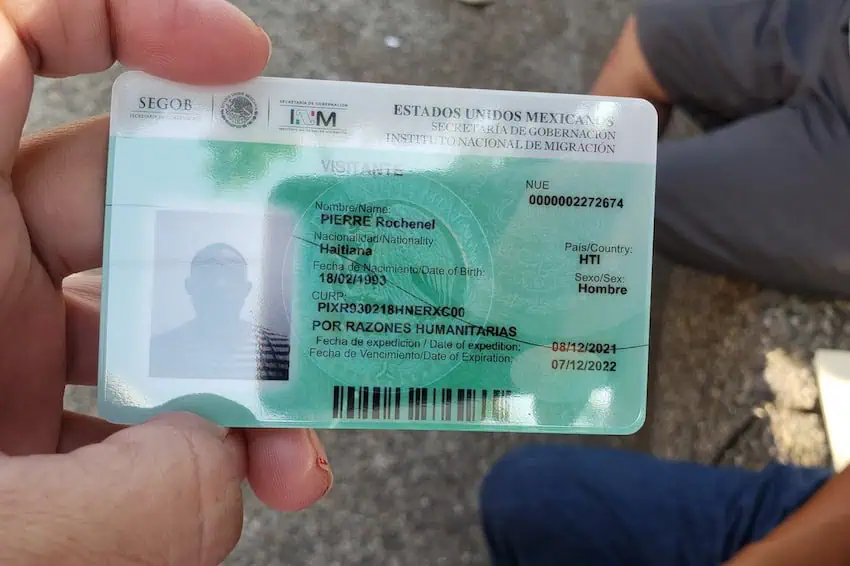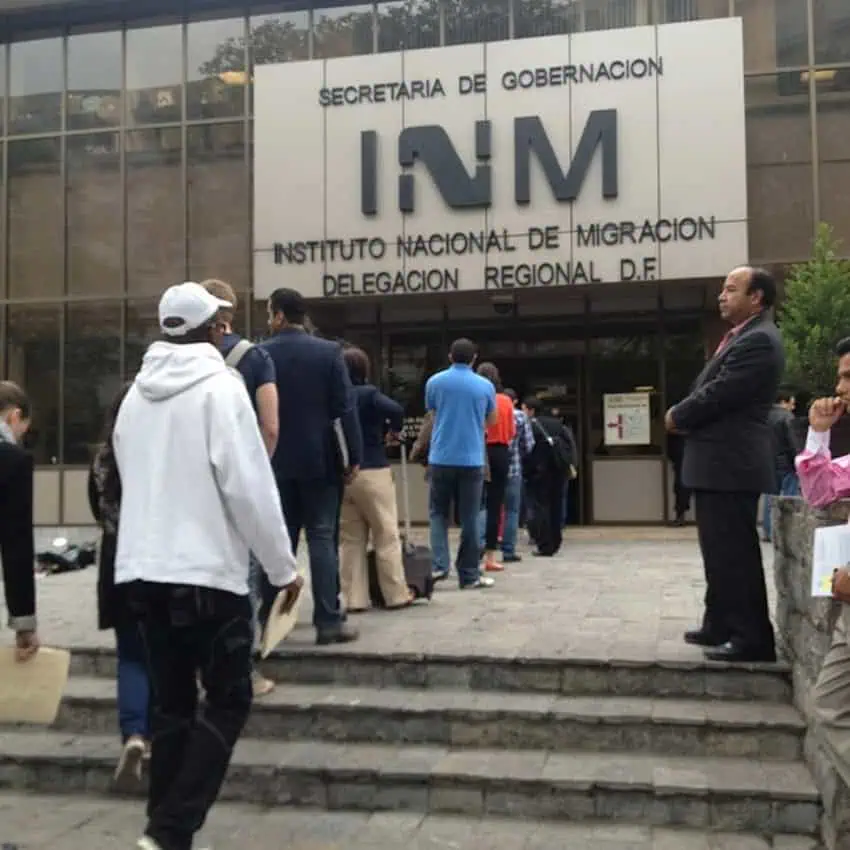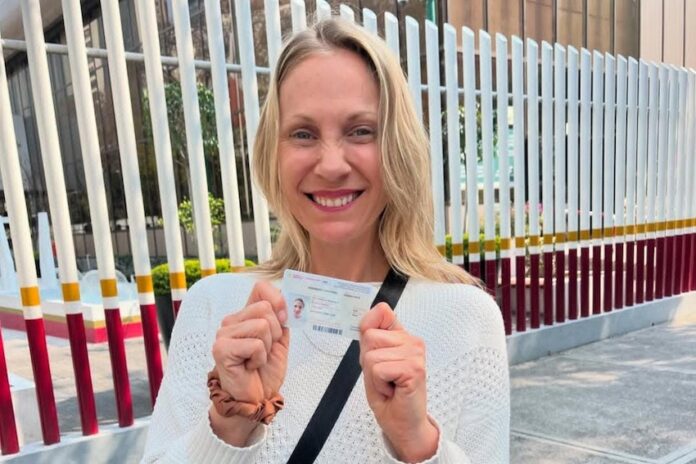Due to some family issues, I’ve been back and forth from the United States more often than usual, an issue when you don’t have Mexican residency. Also due to these issues, I’m not always thinking with the utmost clarity and poise. So when the immigration officer in Mexico City’s Benito Juarez International Airport asked me how long I was planning to stay in Mexico on my tourist visa, I said something really out of character: “two weeks.”
Let me explain. I’ve had every intention of getting my residency and it’s been on my radar for over a year. However, as a freelance writer, my income is never quite steady enough to fulfill the required obligations for economic solvency. Nor is my savings as robust as the Mexican government would deem fit. I’ve been in a limbo of searching for other ways to get the coveted card, so in the meantime, I’ve been sneakily throwing off the immigration officers every time I re-enter Mexico by claiming I’d be staying for varying lengths of time. Sometimes I’d say three months, other times I’d say four months — whatever I said until now, it never mattered. I’d receive a stamp of 180 days and that would be that.

Until that fateful afternoon on Jan. 5, when the otherwise friendly officer stamped my passport and wrote “30 días.”I could feel the meltdown coming right there on the ramp that takes you from immigration to the exit doors.
The hunt for residency begins
As soon as I got home I started my search. Where could I go to return to Mexico and get my rightful 180 days? I looked at Colombia. Terrible flights. I looked at Ecuador. A weekend wouldn’t be enough. I considered the U.S. again. Too soon. Remembering I had a trip to Bacalar coming up, I looked at ferries to Belize.
“I did that once,” a British friend informed me. “When I got back to Mexico, they only gave me seven days on my tourist visa.” He’s not the only one. A rapid Google search indicated that travelers of all nationalities had the same experience returning to Mexico from Belize.

Suddenly, it dawned on me. Isn’t there some way to get residency when you overstay your tourist visa?
Enter “Regularización por documento vencido,” or the expired document regularization program.
This procedure allows foreign nationals with expired tourist visas to apply for temporary residency without having to travel to a consulate abroad or prove economic solvency.
Meet the facilitator
I immediately hired a facilitator, a common route for foreigners on the road to residency. Mine was recommended by two friends so I felt completely at ease handing over my address, passport and…banking statements?
It seemed that, despite the information the internet had provided me, I would need to prove economic solvency.
I sent six months of banking statements from two separate accounts that showed I just grazed the monthly minimum. I was assured that the balances wouldn’t be scrutinized and I wouldn’t have to prove that deposits were income-specific, something I was told I’d have to do when applying for economic solvency.
My facilitator told me that he would send my information to the immigration office to make sure I was eligible to apply. A day later, my application was granted. The next day, he personally came to collect my passport and let me know he would meet me at the National Migration Institute (INM) in Polanco on Thursday at 8:30 a.m.

When Thursday rolled around, I took the grueling Uber ride in rush hour to Polanco. Upon arrival at 8:24 a.m. I texted my facilitator as I couldn’t find him in the crowd of immigrant hopefuls. He messaged me several minutes later and said he was at the front of the line. He had a packet of immigration papers printed which required a few signatures, my passport and my banking statement. He introduced me to his colleague, a 30-something Mexican woman with a lovely jacket, and informed me that she had been waiting in line since 6 a.m.
Into the INM
At 9 a.m., the doors opened. Having paid a hefty sum for assistance, I was slightly confused as to why I was supposed to arrive 30 minutes prior just to wait around and make small talk. We went inside, but the facilitator stayed outside.
By 9:30, it was clear that I had no appointment and would have to come back the following Tuesday at 9 a.m.. Again, confused, as I thought booking my appointment ahead of time and online was what I had partially paid for, I left the packet of papers with the facilitator, took my passport and went home.
Fast forward to Tuesday. I arrive at 8:30 a.m. sharp and I see my facilitator’s colleague waiting toward the front of the line. We make more small talk for 15 minutes and I ask where the facilitator is, as he has all my required forms. He’s on his way. Five minutes later, he arrives, and I’m again unsure as to why I had to be here at 8:30.
At this point, you’re probably wondering why I didn’t just say something. The answer is I hate confrontation, and at that point I just wanted to get on with the process and be done with it.
Second time’s the charm
Again we go up to the rotunda, only this time, instead of signing in, we’re told to sit in a section to the left and wait for my name to be called. It only takes about 10 minutes before I hear Bet-han-ee Plat-a-neyya and bolt to the desk.
“What do you do?”
“I’m a writer.”
“What’s your monthly income?”
“$4,200.” That, by the way, is nothing more than the required amount to apply for economic solvency.

She tells me to sit and wait to be called again. I chat with the facilitator’s colleague while realizing my bank statements were utterly unnecessary.
The office worker calls me up at 11 AM. I now must move to a different section. At this point, the facilitator’s colleague is no longer able to accompany me, and goes outside until I’m done.
The second section is for payment. I stand in a 20-minute line before I’m able to participate in what looks like a game of musical chairs. Each time a person is called to the counter to make a payment, everyone moves one seat over. This Snake-like dynamic continues for over an hour, when it’s finally my turn to pay. I spend at least 45 minutes standing at the payment counter.
The very sweet officer asks me again about my job and monthly income. He shuffles stacks of papers, clicks on his keyboard, makes copies and asks me to sign eight receipts that somehow coincide with the three payments I’m required to make to acquire a four-year residency permit. Those were the following:
- Application fee: 1,780 pesos
- Fine for overstaying my tourist visa: 11,201 pesos
- A four-year residency permit: 12,529 pesos
The total cost of my regularization, not including facilitator’s fee, was 25,510 pesos.
Resident at last
I am officially invited to the third and final section. When I get there, a woman in uniform barks at me to show my passport before grunting for me to sit down. I sit before a collection of heavily lipsticked women in uniform, each tapping away at their respective computers or taking photos of newly-minted residents for their ID cards.
The most soft-spoken woman of the bunch calls me over.

She inquires about my birthdate, my height in centimeters and my address, and orders me to remove my jewelry. She takes three photos, a headshot and two profiles. She tells me to sit in the waiting area. Two minutes later while I’m still fiddling with the clasp on my necklace, she holds up a card. I dash toward her.
I receive another stack of papers which include a migration document with my Unique Population Registry Code, or CURP, an 18-character alphanumeric code that identifies every Mexican and resident, along with my shiny beige-colored residency card. Despite the horrible fish-eye camera angle that makes me look like a literal alien in addition to a legal one, I feel myself choke up a little. This is a monumental moment in my life! It’s the first time I’ve ever been an official resident of another country and, despite the six hours I’ve spent waiting in lines, it was a relatively easy process.
If you’ve made it this far, you’re probably wondering one thing.
Was it worth hiring a facilitator to get Mexican residency through regularization?
Would I recommend getting a facilitator to anyone else?
The short answer? No.
The medium answer? No. Beyond the misgivings I’ve mentioned in this article, I can’t verify that there is any instance where the immigration office needs to approve your eligibility to apply prior to your appointment. I could be wrong, but I’m having a hard time proving it.
The long answer? It might depend on the program you’re applying for. It also could be useful if administrative processes in another language stress you out. In my personal experience applying for expired visa regularization, I feel strongly that I could have done this myself and saved 5,000 pesos, which I would have happily spent on another trip to Bacalar, this time with a ferry ride to Belize.
The views expressed in this article are solely those of the author and do not reflect the views of Mexico News Daily or its affiliates
Bethany Platanella is a travel planner and lifestyle writer based in Mexico City. She lives for the dopamine hit that comes directly after booking a plane ticket, exploring local markets, practicing yoga and munching on fresh tortillas. Sign up to receive her Sunday Love Letters to your inbox, peruse her blog or follow her on Instagram.
